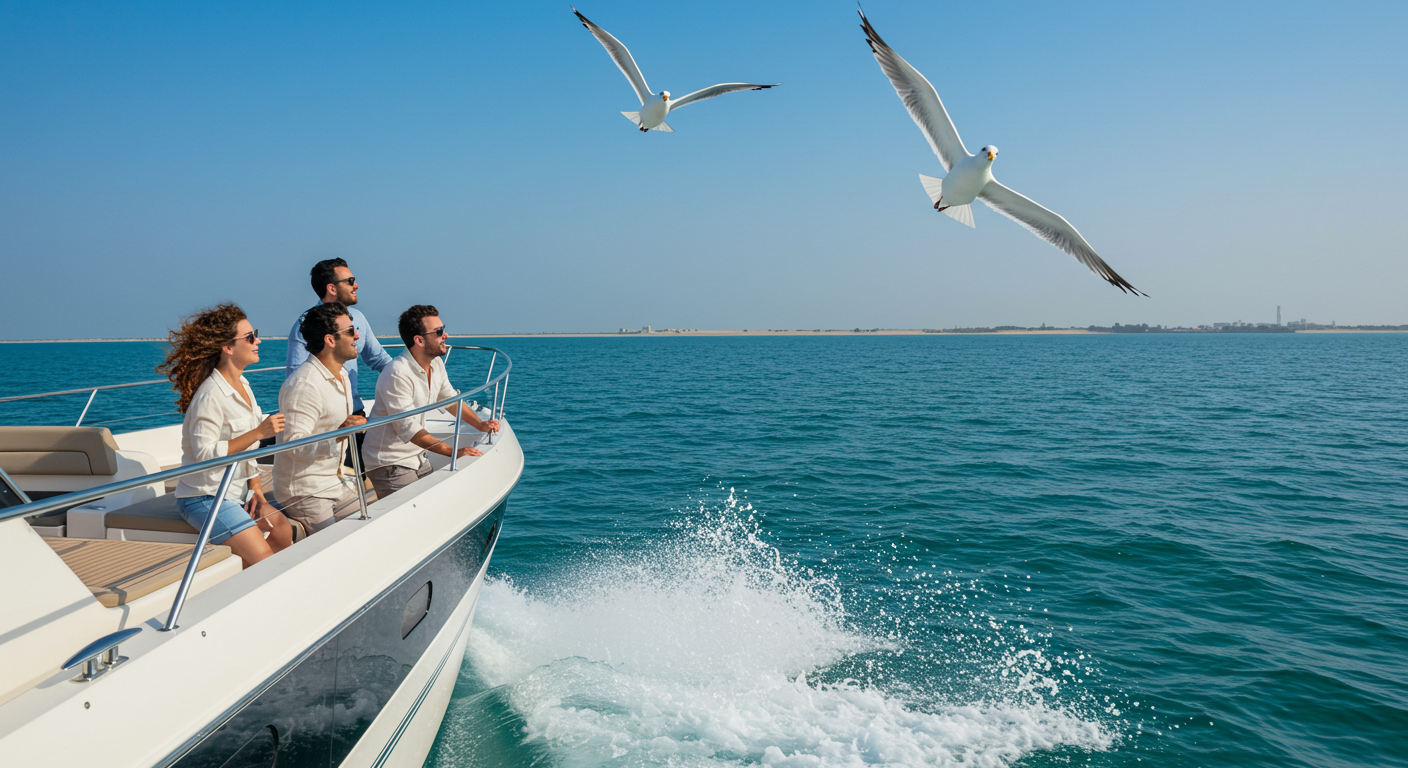
What Wildlife Can You See on a Boat Tour in Abu Dhabi
Abu Dhabi’s coastal waters aren’t just scenic—they’re alive. Protected by a vast network of mangrove forests, sandy islands, seagrass meadows, and shallow tidal flats, the city’s marine environment supports a surprisingly rich array of wildlife. What makes this coastline truly unique is the convergence of urban development and preserved ecological zones—offering glimpses of wild nature just minutes from the city skyline.
Abu Dhabi’s waters stay warm most of the year, which promotes biological diversity. Areas like the Eastern Mangrove National Park, Al Wathba Wetland Reserve, and the Marawah Marine Biosphere are vital to sustaining local populations of dolphins, turtles, and hundreds of bird species. These regions have been carefully protected and remain relatively undisturbed—making them ideal for spotting wildlife in its natural setting.
If you’re wondering what wildlife can you see on a boat tour in Abu Dhabi, the answer is: plenty. Unlike in aquariums or man-made enclosures, a boat tour gives you the chance to observe animals in real time, doing what they do naturally. Whether you’re watching a dolphin arc through the surface, a flamingo wading in the distance, or a turtle gliding beneath the boat, it’s an experience grounded in the real rhythm of the ocean. The silence of the open water and the slower pace of boat travel allow for a more immersive, respectful form of eco-tourism that’s hard to match on land.
Dolphins — The Star Attraction
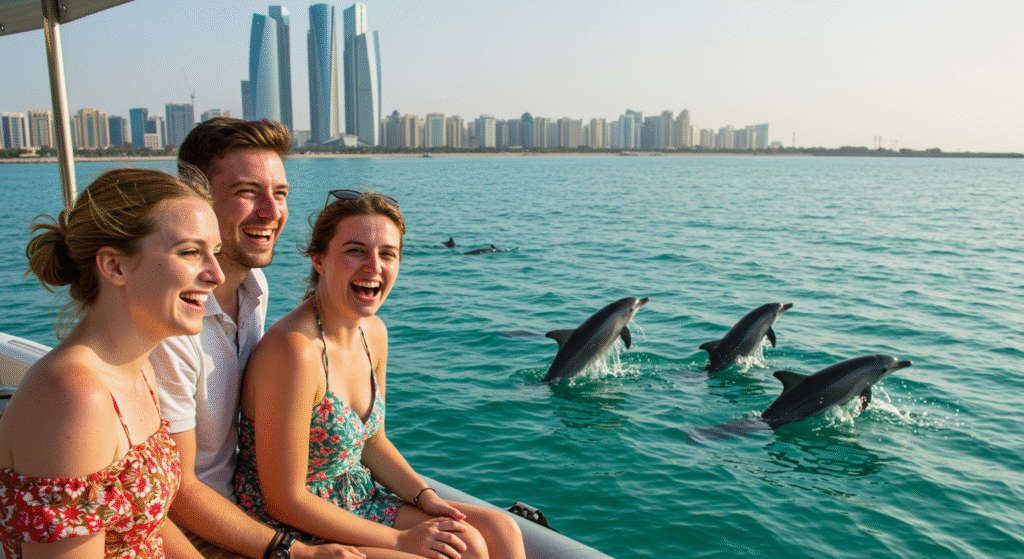
One of the biggest draws for boat tours in Abu Dhabi is the chance to see dolphins—and with good reason. Bottlenose dolphins and Indo-Pacific humpback dolphins are commonly seen swimming just off the coast, especially near Lulu Island, Al Raha Beach, and the outer reaches of the Corniche and Yas Bay. These marine mammals are naturally curious and often surface close to boats, thrilling passengers with their playful leaps and synchronized movements.
Dolphins in Abu Dhabi tend to travel in small pods and are usually spotted during the cooler months (from November to April), when the water is calmer and marine activity is more predictable. Early mornings offer the best chance for a sighting, as the sea is still, and the traffic from larger vessels is minimal.
What makes dolphin spotting here so appealing is the accessibility. You don’t need to venture far from the city. In fact, just 15–20 minutes after leaving the marina, you could find yourself face-to-face with a pod cruising beside your boat. That said, sightings are never guaranteed—nature makes the rules. But with a knowledgeable captain and a quiet route, the odds are in your favour.
Tour providers who respect wildlife will never chase or encircle dolphins. Instead, they keep a safe distance and let the animals approach if they’re comfortable. This approach not only preserves the safety and stress levels of the animals but also leads to better, longer sightings for guests.
Dugongs — The UAE’s Gentle Sea Cows
Few people realise that Abu Dhabi is home to the second-largest population of dugongs in the world. These gentle herbivores are cousins of the manatee and are sometimes referred to as “sea cows” due to their slow, grazing lifestyle. Dugongs feed on seagrass beds and are most often found near Marawah Island, Bu Tinah, and parts of the Western Region, where conservation efforts have preserved their fragile habitat.
Dugongs are shy creatures, often preferring deeper, quieter zones away from high-speed vessels or crowded tourist areas. While they’re not as commonly seen as dolphins, some boat charters that venture into more remote parts of the marine biosphere have reported sightings. Even if you don’t spot one during your tour, simply cruising through their habitat gives you a unique appreciation for the delicate balance of life under the sea.
Because dugongs are listed as vulnerable on the IUCN Red List, Abu Dhabi has placed special emphasis on their protection. Regulations restrict certain types of boat activity in key areas, and eco-conscious operators avoid routes that could disturb feeding zones. These efforts have helped stabilise the dugong population in the region—a rare conservation win.
For those seeking an off-the-beaten-path wildlife experience, chartering a longer boat trip toward the western marine reserves offers a rare chance to witness one of the Gulf’s most elusive species. It’s not just about the sighting—it’s about knowing the story behind the water you’re sailing through.
Flamingos, Herons, and Coastal Birds
Abu Dhabi is a haven for birdwatchers—especially those drawn to flamingos, grey herons, egrets, and ospreys. These birds frequent the Eastern Mangrove Lagoon National Park, Al Wathba Wetland Reserve, and Reem Island shorelines, offering rich opportunities for wildlife viewing from the water.
The most iconic among them is the Greater Flamingo, with its pale pink feathers and striking silhouette. These birds gather in large flocks in shallow lagoons and salt flats, particularly between November and March, when migration peaks. Their movements are slow and elegant, making them ideal subjects for photos from the boat.
Herons and egrets can often be seen perched along the mangrove edges or wading in the shallows. These birds are active hunters and will often ignore quiet boats, giving you front-row seats to their natural behavior. Ospreys, meanwhile, are birds of prey you might catch swooping down to snatch fish from the sea—a thrilling sight for those lucky enough to witness it.
Even if you’re not a bird expert, there’s something magical about seeing a flock take off against the setting sun or spotting a lone hunter stalking its prey in silence. Bring binoculars if you’re keen—but even without them, the proximity and visibility from a boat are excellent.
Sea Turtles and Rays Beneath the Surface
Abu Dhabi’s waters are also home to hawksbill and green sea turtles, both of which are considered endangered. These slow-moving reptiles can sometimes be spotted surfacing for air, especially in the calmer bays near Saadiyat Island and Sir Bani Yas. Although they tend to stay below the waterline, a trained guide will know the signs—such as surface ripples or bubbles—that hint at their presence.
Sea turtles are most commonly spotted during the warmer months, especially between May and October, when nesting and feeding patterns bring them closer to shore. Some eco-tours even pass nesting areas (from a safe distance) where you can learn about ongoing conservation efforts.
Rays, including eagle rays and stingrays, are also found in Abu Dhabi’s shallow seagrass meadows and sandy bottoms. They often glide beneath the surface in pairs or small groups, their wings flapping in rhythm like birds underwater. You’re more likely to see them in the early morning or late afternoon when the water is less disturbed and visibility is better.
While sightings of turtles and rays are less frequent than dolphins, they’re no less memorable—and seeing them in their natural habitat is a reminder of how much life exists just below the surface.
Small Marine Life You Might Not Notice
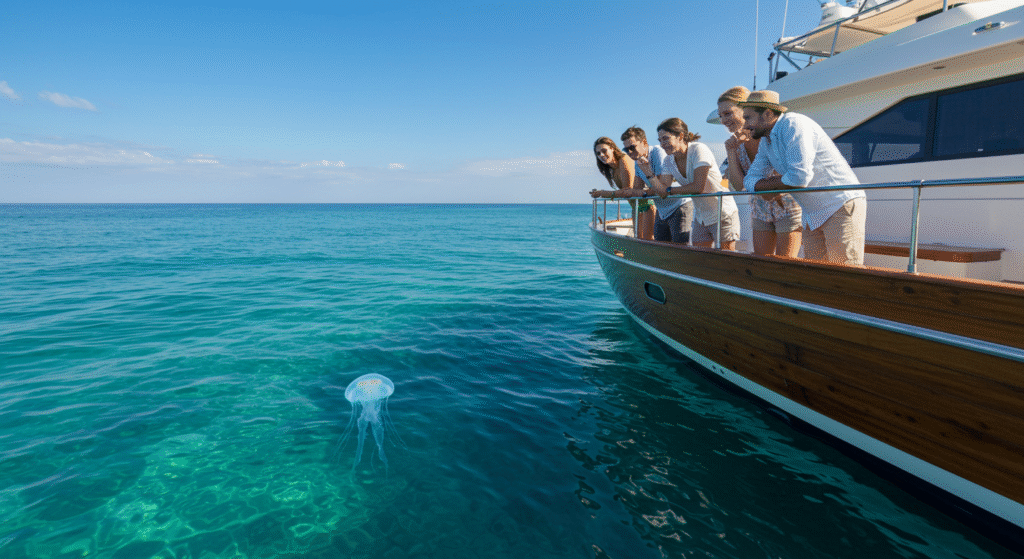
While the big animals get the spotlight, boat tours in Abu Dhabi also bring you closer to the less obvious but equally fascinating marine life that thrives in local ecosystems. Crabs, jellyfish, needlefish, and small schools of silver baitfish often dart through shallow waters, especially in and around mangrove forests.
In clear conditions, especially near Al Hudayriat Island or the quieter inlets of Marawah, you might even see starfish, sea cucumbers, and tiny seahorses clinging to submerged roots or seagrass blades. Many of these species serve as indicators of healthy water, and their presence is a strong sign of a thriving marine ecosystem.
Spotting these creatures requires a slower pace and a trained eye—another reason why eco-style boat tours or smaller private charters are ideal. These tours are often quieter and allow guests to linger in calm coves, where these creatures are most visible.
Which Boat Tours Are Best for Wildlife Watching?
| Tour Type | Best Wildlife to Spot | Recommended Time | Ideal For |
|---|---|---|---|
| Mangrove Kayak Tour | Crabs, herons, small fish, turtles | Morning or sunset | Nature lovers, photographers, eco-tourists |
| Private Boat Tour (1–2h) | Dolphins, birds, rays | Morning or late day | Families, couples, casual wildlife watchers |
| 3-Hour Charter | Dolphins, turtles, dugongs (remote) | Morning or custom | Wildlife-focused travelers, special occasions |
| Sunset Boat Tour | Flamingos, sea birds, occasional rays | Golden hour | Romantics, photographers, peaceful escapes |
| Moonlight Boat Tour | Very low visibility, ambient sounds | After sunset | Relaxation, reflection, mood-focused tours |
For the best overall wildlife experience, a private morning charter or a guided mangrove tour gives you the quiet conditions and knowledgeable guide needed to maximize sightings.
Respecting Wildlife: Boating the Right Way
Wildlife viewing in Abu Dhabi works best when it respects the animals and their environment. Reputable tour providers avoid speeding near sensitive zones, keep noise levels down, and never chase or crowd marine life. Many also follow Abu Dhabi’s marine conservation regulations, which include no-boat zones, minimum distance requirements for dolphin viewing, and strict controls on pollution and waste.
As a guest, you can do your part too:
-
Choose tours that advertise eco-friendly or conservation-first approaches.
-
Avoid feeding or touching wildlife.
-
Refrain from using flash photography near animals.
-
Don’t litter—take everything you bring back with you.
Seeing wildlife isn’t just about entertainment—it’s about connection and conservation. The more we appreciate Abu Dhabi’s natural beauty, the more we’re motivated to protect it.
Conclusion: What Wildlife Can You See on a Boat Tour in Abu Dhabi?
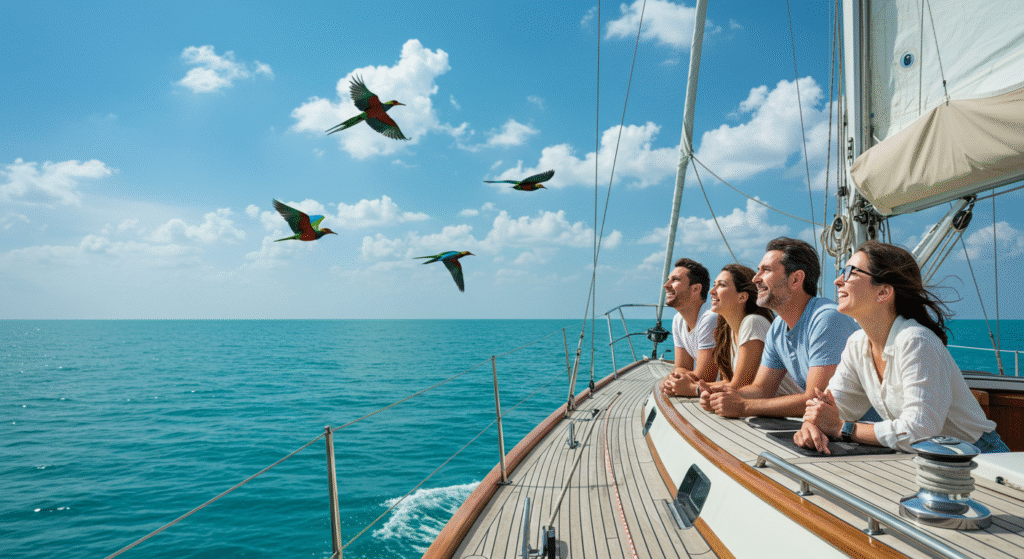
From the soaring silhouette of a heron to the unexpected flash of a dolphin fin, a boat tour in Abu Dhabi offers more than a scenic ride—it’s a living showcase of the region’s biodiversity. Whether you’re exploring quiet mangrove channels or cruising past remote islands, the experience gives you front-row access to nature in motion.
Each sighting, from the subtle to the spectacular, is a reminder that even in one of the world’s most modern cities, the wild still has a place. And all you have to do to find it… is step on board.


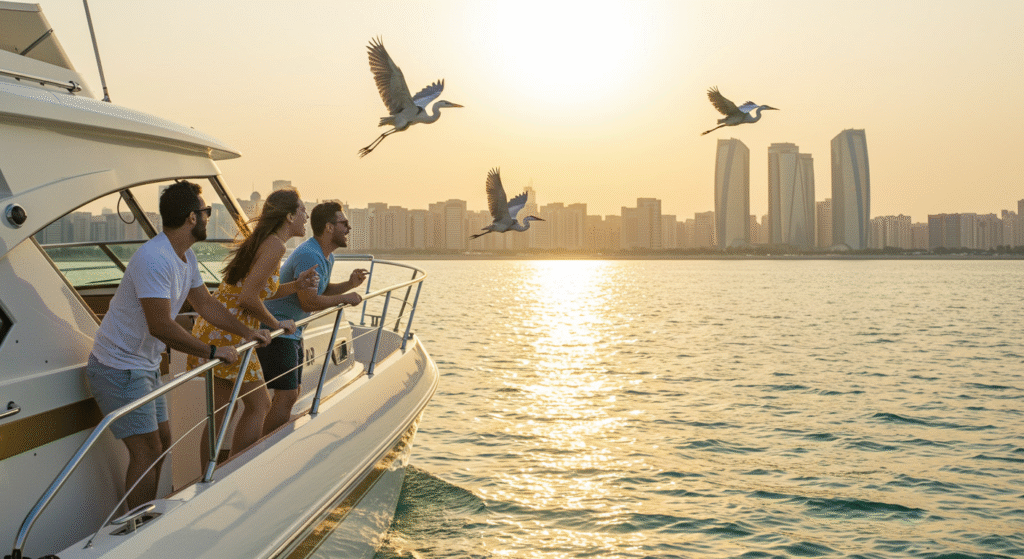
Leave a Reply